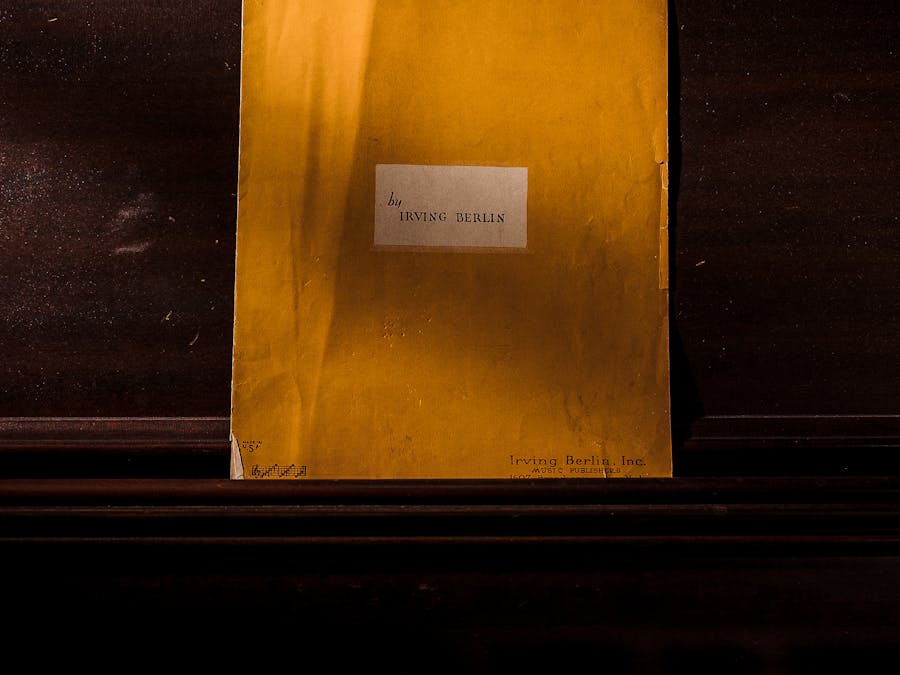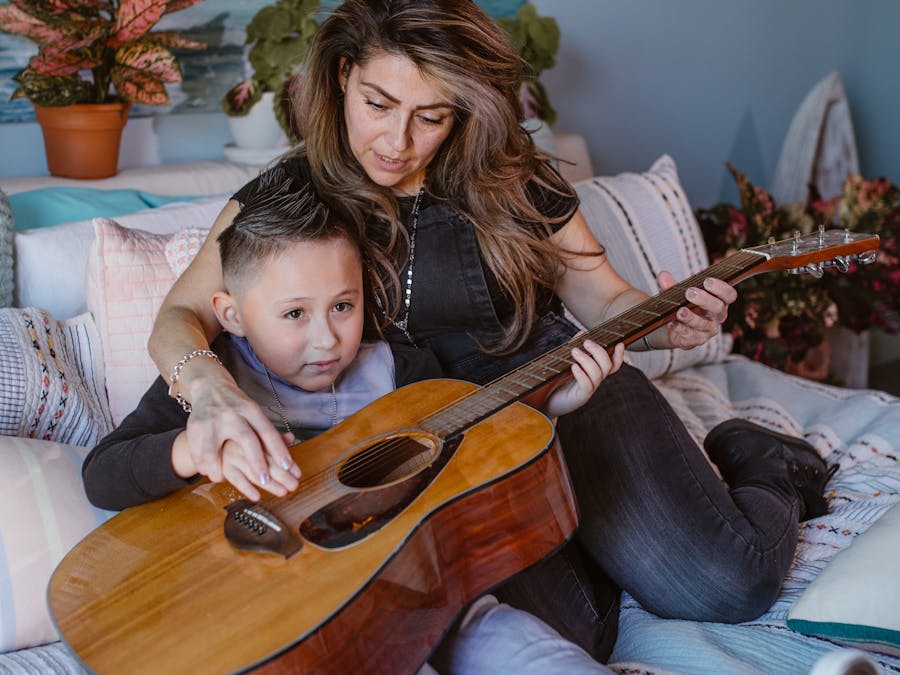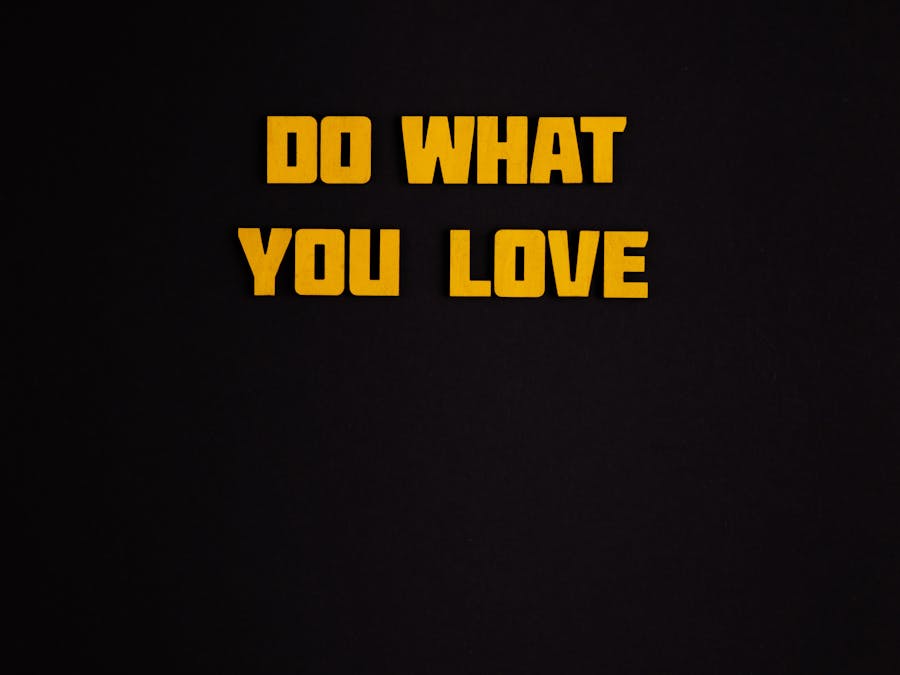 Piano Guidance
Piano Guidance
 Piano Guidance
Piano Guidance

 Photo: Andrea Piacquadio
Photo: Andrea Piacquadio
So, if asking whether Daft Punk used software plug-ins in their creations, both live and in the studio, the answer is “minimally”. Outside of Pro Tools plug-ins, and the obvious use of Autotune, the only real software that the duo has admitted to using is Ableton; specifically for running Operator in Ableton Live.

In Classical music, you play the 'true' melodic minor scale ascending and the natural minor scale descending. But in Jazz, we play the 'true'...
Read More »
The guitar is often considered to be the "coolest" musical instrument to learn. There are plenty of options available too: from electric to...
Read More »For music made by a couple of “robots”, the process behind the creation of Daft Punk’s music is surprising human. Fortunately, when Guy-Manuel de Homem-Christo and Thomas Bangalter removed their helmets, they weren’t shy about revealing the process behind their interstellar sonic projections. Let’s pull back the curtain on the Daft Punk software and hardware used over the years. Now, folks have written doctoral theses on the gear used to craft their 4 studio albums, (5 if you include the Tron: Legacy Soundtrack). But what’s most surprising is that what most people presume to be samples, are actually recreations of the original sounds using vintage synths and hardware. Daft Punk weren’t opposed to using any kind of technology, as long as what they were using was creating something original. The French duo’s dedication to authentic sound only grew stronger throughout the years – straying from emulators, but having no qualms about using software to create a unique sound. So, if asking whether Daft Punk used software plug-ins in their creations, both live and in the studio, the answer is “minimally”. Outside of Pro Tools plug-ins, and the obvious use of Autotune, the only real software that the duo has admitted to using is Ableton; specifically for running Operator in Ableton Live. Impressed even by the plug-in delay compensation on Ableton 2.0, (the newest version is Ableton 11.0), Bangalter would use Ableton effects “to make it sound warmer and crisper, or dirty.” And after praising the unique soft-synth plug-ins on the platform, he remarked that “The rule is: There are no rules. That is definitely the case for the freeform piece of software that is Live.” For a mantra that essentially was focused on the quest for unique and authentic sound, one could only imagine what would arise if the robots plugged themselves into Cube. Their creative process always pushed the limits of the available technology at the time, and the evolution of tech since their final release in 2013 has leaped forward exponentially. In a Japanese interview from 1999, Bangalter describes their recording process at the time: “In the first step when making music with hardware, it goes through the mixer and the compressor and is recorded on the DAT. After that, effects are put on the sound source before going into the mixer to be recorded. We don’t use the AUX on the mixer.

Know your notes! The demands of the Grade 1 pieces will mean that it would be very difficult to make progress with the pieces without having a good...
Read More »
Playing open chords Open chords are one of the first skills a beginner guitarist will learn. Master just three, and you can play a whole host of...
Read More »The second step is directly putting the sounds from the DAT into the S-760 sampler and editing/cutting the two tracks into however many pieces, like hard disk recording. Lastly, we recorded it directly from the S-760 to the DAT. From here we do the rest with the Macintosh.” As I myself was primarily impressed by how smoothly Minesweeper operated on my Macintosh in 1999, the concept of using it to create Discovery, one of the greatest electronic music albums of all time, is beyond my degree of comprehension. So, if their aversion to emulators was steadfast throughout their career, the question is then what hardware did they deem essential over their near 30-year existence? As could be imagined, the list of gear is exhaustive. Big budgets, patient timelines, and a steadfast dedication to finding the right sound all mean that there must be a massive spot somewhere housing all their gear from over the years. However, if you run down the comprehensive lists of tools used for albums and live performances, there are a select few instruments that they were dedicated to throughout their complete timeline.

An upright piano is a great place for a beginner to start. Most pianos will be good quality but an upright piano has the benefit of being more...
Read More »
As early as 1956, deejays were toasting (an African tradition of "rapped out" tales of heroism) over dubbed Jamaican beats. It was called "rap",...
Read More »The definitive sampler-synthesizer of the early years. With a processing rate miles above anything else at the time, Duran Duran would have been an acoustic folk group without it.

Your Cat May Actually Like Your Sounds A cat nibble can also be a sign that they are soothed by you and want to soothe their oral cavities further...
Read More »
Freddie left boarding school when he was 16. He studied classical piano, to Grade 4, but being an arty lad, his parents encouraged him to develop...
Read More »
You'll need music, an etude or method book, and a metronome to help you get started. These supplies require minimal investment on your part, but...
Read More »
The Pleyel piano factory, which once supplied instruments to Frederic Chopin, will close its doors at the end of the year. One of the world's...
Read More »